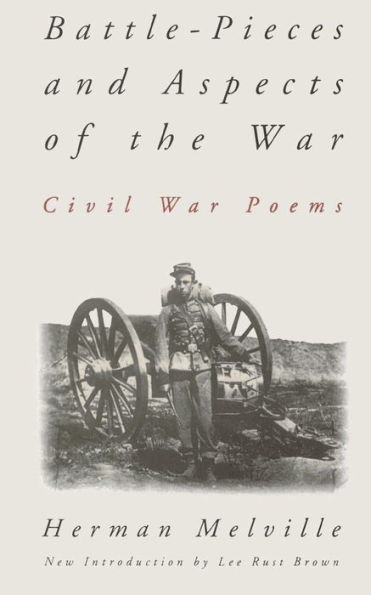

Paperback
-
PICK UP IN STORECheck Availability at Nearby Stores
Available within 2 business hours
Related collections and offers
Overview
Herman Melville (1819-1891) stopped writing fiction after the publication of The Confidence Man: His Masquerade in 1857; as he entered his forties, he turned to poetry as his literary avocation. His first published book of poems was Battle-Pieces and Aspects of the War (1866), a meditation on the Civil War in short lyric and narrative verses, and a work as ambitious and rich as any that issued from his pen.
Melville was well acquainted with the war. He made many trips south to visit his cousin Henry Gansevoort, a Union officer—on one such trip, he was active in an unsuccessful pursuit of Confederate raider John Mosby. He had met Abraham Lincoln in Washington, and called upon General Ulysses S. Grant in Virginia in 1864. And his position within his family, whose members were involved in almost every aspect of the war, was close enough to allow him a rare vantage point on this country's greatest conflict.
But, Battle-Pieces is anything but epic. Rather than celebratory, the tone of Melville's poem is grievous and disconsolate. "Unmindful, without purposing to be, of consistency" (as Melville puts it in his preface), the poems do not attempt to paint a broad picture of the whole of the war, but rather represent disjoint aspects, each faithful to Melville's impulsive, modern, yet realist view of the tragedy.
This facsimile edition of Battle-Pieces includes 72 poems on almost every major campaign, battle, and event; Melville's own detailed historical notes and his supplementary essay on Reconstruction; and a new introduction by Lee Rust Brown, who teaches English at the University of Utah and is the author of The Emerson Museum. An American classic is thus available once again.

Product Details
| ISBN-13: | 9780306806551 |
|---|---|
| Publisher: | Hachette Books |
| Publication date: | 08/22/1995 |
| Pages: | 288 |
| Product dimensions: | 5.50(w) x 8.25(h) x (d) |
About the Author
His sea adventures furnished the material for Melville’s successfulfirst novels, Typee (1846) and Omoo (1847). Following thepublication of Mardi (1849), Redburn (1849), and White-Jacket (1850), Melville began work on his masterpiece, Moby-Dick (1851).
In 1850 Melville moved with his wife and family to a farm inPittsfield, Massachusetts. Unable to earn a living from the farm, Melville was forced to borrow money from relatives; he also received some income from stories and sketches published in popular magazines. These pieces, including the now acclaimed “Bartleby, the Scrivener,” were later collected in the Piazza Tales (1856).
After 1850, however, Melville’s literary success faded: Moby-Dick was both a critical and commercial failure; the complexity of this and Melville’s next work, Pierre (1852), could not rekindle the interest readers had in his early adventure stories. The final novel Melville published before abandoning prose altogether was The Confidence Man: His Masquerade (1857), a satirical and allegorical tale which baffled reviewers condemned at its appearance as “misanthropical,” but which is now considered to be among Melville’s best works. Thereafter, Melville turned to poetry; his Battle Pieces (1866), Clarel (1876), and John Marr and Other Sailors (1888) were published in small, privately subsidized editions.
In 1863 Melville sold his farm and moved back to New York City, where, to support his family, he became a customs inspector, a position he held from 1866 to 1885, when some unexpected legacies made it possible for him to retire.
Herman Melville died, all but forgotten, in New York City on September 28, 1891. The manuscript of Billy Budd, now Melville’s best known work after Moby-Dick, was found in his desk after his death; it remained unpublished, however, until 1924.
Date of Birth:
August 1, 1819Date of Death:
September 28, 1891Place of Birth:
New York, New YorkPlace of Death:
New York, New YorkEducation:
Attended the Albany Academy in Albany, New York, until age 15